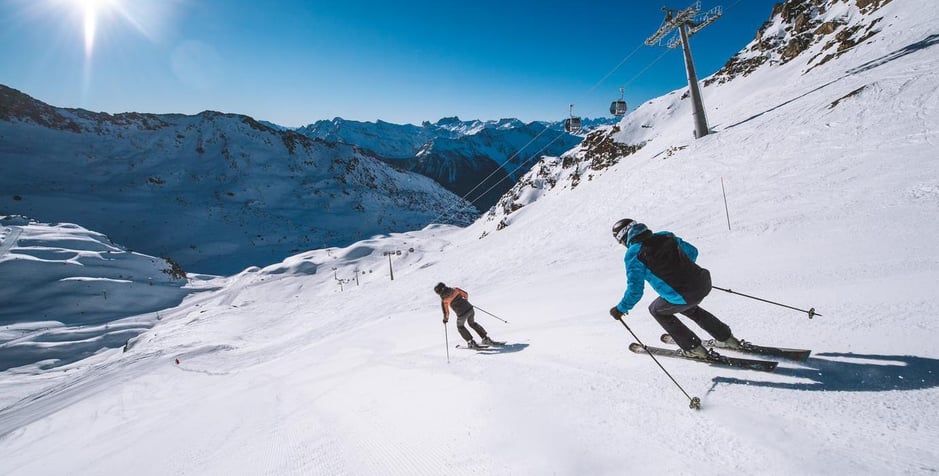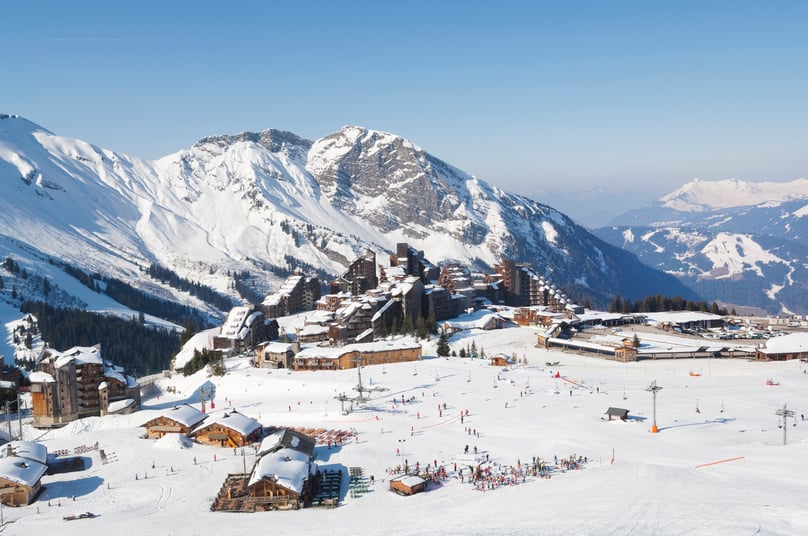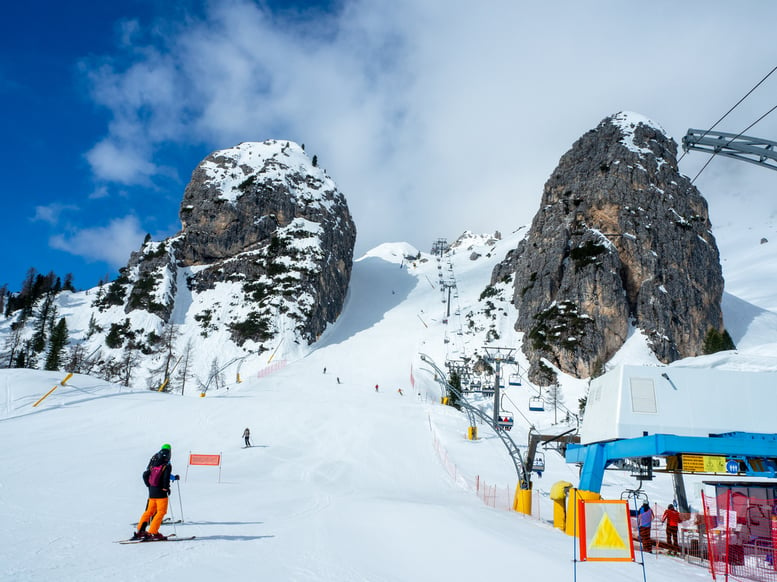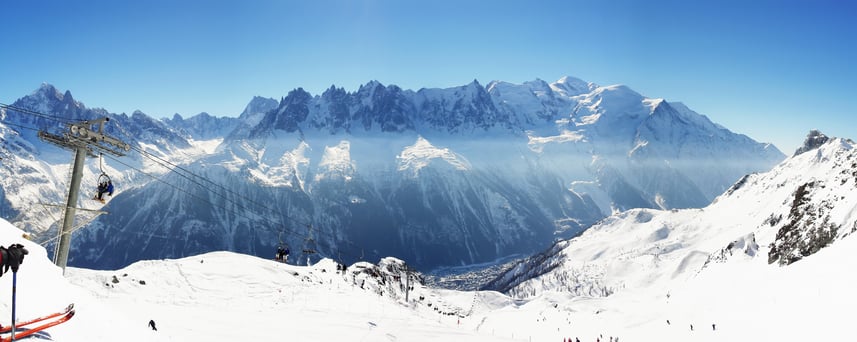Top European Ski Destinations 2025/26
Europe is home to some of the world’s most iconic ski destinations, where vast ski areas, reliable snow and picture-perfect alpine villages combine to create unforgettable winter escapes.
We've compiled five of the top European resorts From the high-altitude slopes of the French Alps to the sunlit limestone peaks of the Italian Dolomites, each resort offers its own blend of skiing, culture, and off-slope activities. Whether you’re seeking expert off-piste adventures, family-friendly runs, or après-ski with a cosmopolitan buzz, these five world-class resorts deliver something for every type of skier.
- Intermediates and mileage hunters: The seamless lift network and variety of slopes provide endless cruising opportunities, from long, panoramic reds to technical blues.
- Groups and mixed abilities: Courchevel offers upscale accommodations and fine dining, while Les Menuires and La Tania provide excellent skiing at a more affordable price.
- Families and beginners: Numerous ski schools, gentle nursery slopes, and child-focused facilities make the region highly accessible.

- Snow level: High-altitude resorts like Val Thorens (2,300m) and Orelle ensure reliable snow from late November through early May. Lower resorts, such as Courchevel (1,300-1,850m) and Méribel (1,450-1,740 m), may experience variable early season snow.
- Accessibility: Well-connected by road and rail, with nearest airports in Geneva, Lyon, and Grenoble. Shuttle buses link resorts, and many villages offer ski-in/ski-out accommodation. Lift networks are modern, efficient, and beginner-friendly.
- Non-ski activities: Enjoy vibrant après-ski scenes in Courchevel and Val Thorens, including lively bars and restaurants. Christmas markets and festive events are held in Méribel and Courchevel during December. Other activities include snowshoeing, sledging, ice skating, and wellness/spa experiences in most resorts.
- Intermediates and cruising enthusiasts: Long blue and red runs provide scenic cruising across multiple valleys, with consistent grooming and accessible lifts.
- Families and beginners: Ski schools, gentle nursery slopes, and safe off-piste zones make learning easy, and most resorts have child-friendly facilities.
- Freestyle riders: Avoriaz and Morzine host extensive terrain parks, with jumps, rails, and half-pipes suitable for various levels.
- Value conscious travellers: Lower altitudes and a wide selection of accommodation across the twelve linked resorts make it possible to enjoy large-scale skiing without the high costs of the high Alps.

- Snow level: Altitudes range from around 1,000m in some lower villages (e.g., Morzine) to 2,466m at Avoriaz, so snow reliability is generally good from mid-December to early April. Early-season snow may be limited at lower-altitude resorts, while high-altitude areas like Avoriaz maintain better coverage.
- Accessibility: Portes du Soleil spans France and Switzerland and is easily accessible by road and rail. The nearest airports include Geneva and Lyon, with shuttle services connecting many of the resorts. Modern lifts link all twelve resorts, and many villages offer ski-in/ski-out accommodation or convenient transport to lifts.
- Non-ski activities: Beyond skiing, enjoy snowshoeing, sledging, ice skating, and wellness centres in most resorts. Avoriaz offers indoor waterparks and family-friendly entertainment, while villages like Morzine and Les Gets host charming Christmas markets, traditional Alpine events, and lively après-ski bars.
https://en.portesdusoleil.com/
- Intermediates and strong beginners: Broad cruising slopes, scenic descents, and well-groomed runs make learning and progression enjoyable.
- Food and culture lovers: Explore gourmet mountain huts, traditional Ladin cuisine, and picturesque villages with authentic alpine charm.
- Mixed groups: Wide variety of slopes and sunny exposures allow skiers of different levels to enjoy the same area, while combining skiing with cultural and culinary experiences.

- Snow level: High-altitude areas like Marmolada (up to 3,200m) ensure reliable snow from early December to late April. Lower resorts, around 1,200m, may have variable snow early or late in the season. Most resorts supplement with snowmaking to maintain coverage on key runs.
- Accessibility: Dolomiti Superski is located in the Dolomites of northern Italy, spanning multiple valleys across South Tyrol, Trentino, and Belluno. The area is accessible by road, train, and nearby airports (Venice, Innsbruck, Verona, and Bolzano). Shuttle services and modern lift systems link the valleys efficiently, and many resorts offer ski-in/ski-out accommodations.
- Non-ski activities: Visitors can enjoy snowshoeing, sledging, ice skating, spa and wellness centres, and guided winter walks. Many villages host Christmas markets, cultural events, and local food festivals during the season.
More information
- Experts or guided intermediates: Challenging terrain, glacial skiing, and iconic off-piste descents demand skill and, often, a certified mountain guide.
- City-and-ski combination: Its proximity to Geneva makes weekend or short trips easy, while offering the chance to combine skiing with urban culture.
- Adventure seekers: Ice climbing, mountaineering, and paragliding provide thrilling alternatives to traditional skiing.

- Snow level: With altitudes reaching up to 3,842m on the Aiguille du Midi, snow reliability is excellent on higher slopes and glaciers. Lower valley runs (1,000-1,500m) may see variable conditions, especially early or late in the season. Avalanche risk is very real in Chamonix’s steep terrain. Always check local conditions and hire certified guides for off-piste skiing.
- Accessibility: Located in the Haute-Savoie region of the French Alps, Chamonix sits at 1,035m and is framed by Mont Blanc at 4,810m. Geneva Airport is 1.5 hours aways and provides the quickest access, with regular shuttle services. The resort is spread across several ski areas including, Brévent, Flégère, Grands Montets, and Les Houches all connected by local buses and taxis.
- Non-ski activities: Beyond skiing, visitors can explore the Aiguille du Midi cable car for panoramic views of Mont Blanc, or take the Montenvers cog railway to the Mer de Glace glacier. The town also offers ice skating, spas, climbing gyms, museums, and a buzzing après-ski nightlife.
More information
5. Val d’Isère–Tignes, France
Why visit?
Val d’Isère and Tignes form the legendary Espace Killy ski area, offering around 300km of pistes with exceptional off-piste opportunities. The Grande Motte glacier allows skiing from autumn into late spring, while iconic runs like the Face de Bellevarde test even the most experienced skiers. Off the slopes, visitors can enjoy vibrant après-ski, boutique shopping, and traditional stone-and-wood alpine architecture.
Best for
- Advanced and strong intermediates: Steep descents, varied terrain, and reliable snow create ideal conditions for performance skiing.
- Freeride enthusiasts: Extensive off-piste zones and snow-sure, high-altitude runs make this one of Europe’s best freeride destinations.
- Culture and nightlife seekers: A blend of small alpine village charm with buzzing bars, cafés, and local dining experiences.

Val d’Isère–Tignes, France; photo credit: https://www.tignes.net/activites/hiver/luge
Travel tips
- Snow level: With altitudes up to 3,450m on the Grande Motte glacier, snow reliability is excellent throughout the season, typically late November to early May. Lower village slopes (around 1,550m) may soften in spring, but snowmaking ensures good coverage.
- Non-ski activities: Off the slopes, enjoy snowshoe hikes, ice climbing, spas, wellness centres, and lively après-ski. The resorts host seasonal festivals, live music, and family-friendly winter events.
- Accessibility: Located in the Tarentaise Valley of the French Alps, Val d’Isère and Tignes sit between 1,550m and 3,450m. The nearest airports are Lyon, Geneva, and Chambéry, with transfer times around 3-4 hours. Shuttle buses and private transfers link the resorts, and modern lift systems allow seamless skiing across the entire Espace Killy.
Whether you’re drawn by the thrill of challenging descents, the comfort of family-friendly runs, or the timeless charm of alpine culture, Europe’s ski resorts deliver a balance of adventure, relaxation, and atmosphere that few destinations can rival.
Beyond the slopes, festive markets, wellness retreats, and authentic regional cuisine add even more depth to the experience. Wherever you choose to go, Europe’s winter resorts offer memories to can last long after the snow has melted.



